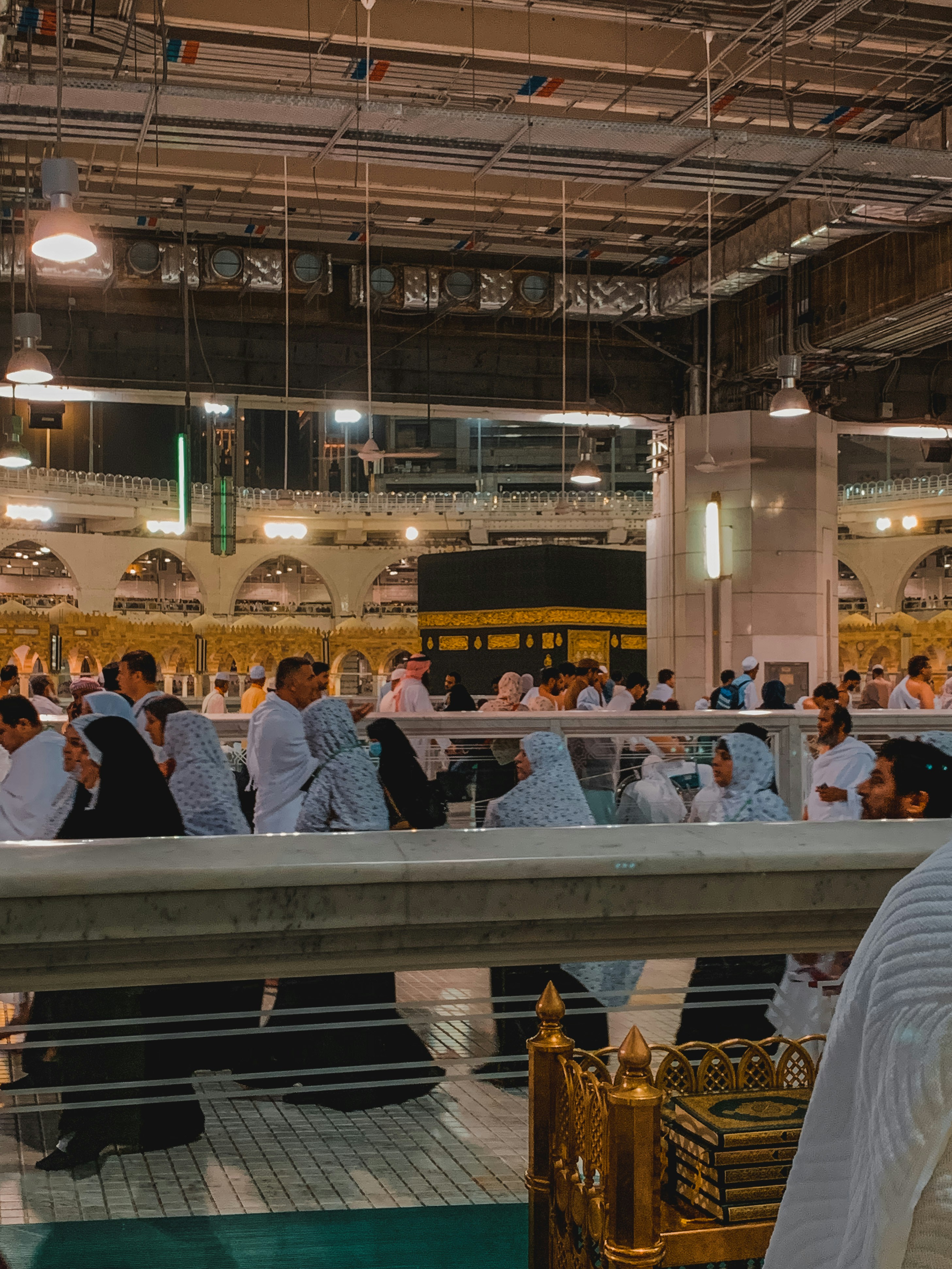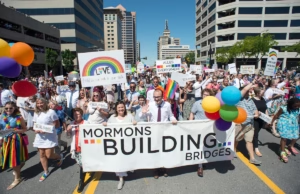Exploring the Rising Trend of Religion in Modern Society: From Instagram Imams to Mega Churches
Introduction: The Spiritual Awakening of a Generation
In recent years, there has been a noticeable shift towards spirituality within contemporary society, marked by a significant increase in individuals seeking solace and meaning through religious practices. This phenomenon reflects a broader spiritual awakening that appears to resonate with a growing number of people disillusioned by the chaos and uncertainty of the modern world. The complexity of contemporary life has propelled many to search for deeper fulfillment and understanding, prompting a re-evaluation of traditional beliefs and practices.
One of the most influential factors contributing to this trend is the pervasive nature of social media. Platforms such as Instagram and Facebook have fostered communities where faith leaders, often referred to as “Instagram Imams” or “social media pastors,” connect with congregants in unprecedented ways. These digital spaces allow for the dissemination of religious teachings and inspirational content, making spirituality more accessible to those who may not engage with traditional religious institutions. The influence of these platforms cannot be underestimated; they not only facilitate the sharing of ideas but also help cultivate a sense of belonging among users, enhancing their spiritual journeys.
Moreover, the role of community in the digital age plays a crucial part in this revival of religious interest. While traditional gatherings may have waned, new forms of community have emerged, uniting like-minded individuals who share a desire for spiritual connection. Virtual worship services and online faith groups have proven to be effective in bridging gaps, fostering relationships, and providing emotional support. In this way, technology bolsters a search for meaning, allowing people to explore their faith in a manner that aligns with their lifestyles.
This confluence of factors—societal chaos, the surge of social media, and the evolving definition of community—has ignited a renewed quest for spirituality. As this trend continues to develop, it will be important to observe how it reshapes the landscape of religion in modern society.
The Power of Social Media: Instagram Imams and Online Communities
In contemporary society, the intersection of religion and social media has become increasingly significant. Platforms such as Instagram are redefining how religious leaders connect with their followers and impart teachings. Within this digital landscape, the emergence of “Instagram Imams” represents a notable trend. These individuals leverage the visual and interactive nature of social media to reach broader audiences, maneuvering traditional barriers often associated with religious engagement.
Instagram Imams utilize dynamic content formats—such as short videos, livestreams, and visually appealing posts—to disseminate religious teachings effectively. By crafting relatable and engaging content, these religious figures are adept at attracting younger demographics who may not engage with religion through traditional means. This strategy not only enhances accessibility to religious guidance but also humanizes spiritual leaders, placing them in dialogue with their congregations in a way that fosters connection and community.
Moreover, online communities formed around shared religious interests serve as platforms for discourse among believers. These spaces facilitate discussions regarding faith, moral dilemmas, and cultural practices, allowing individuals to navigate their spiritual journeys collectively. Such communities create a sense of belonging that can be especially vital for individuals who feel isolated or marginalized in their offline lives. The support and validation offered by peers in these online spaces often encourage deeper exploration of one’s faith and spiritual beliefs.
As religious practices continue to evolve, the role of social media will likely expand, providing innovative ways for individuals to connect with their faith and each other. The rise of Instagram Imams and vibrant online communities signifies not only a shift in religious engagement but also highlights the adaptability of faith in a modern context, making it more accessible to those seeking spiritual fulfillment in the digital age.
Mega Churches: A New Wave of Worship and Community
The rise of mega churches represents a significant shift in modern worship practices, redefining the way spirituality is experienced within contemporary society. Mega churches, often characterized by their large congregations, vast facilities, and diverse offerings, have emerged as influential centers of worship and community engagement. Many of these establishments draw thousands of attendees each week, offering a dynamic environment that contrasts sharply with traditional forms of worship.
One of the primary attributes that attracts congregants to mega churches is the high-energy services that are typically held. These services often incorporate contemporary music, multimedia presentations, and engaging preaching styles, which resonate with a broader audience. This innovative styling not only appeals to younger generations but also creates an inviting atmosphere for individuals who may feel alienated from more traditional worship settings. The engaging environment fosters a sense of participation, encouraging community interaction and fostering bonds among congregants.
Accessibility is another defining feature of mega churches. They frequently provide a myriad of resources including educational programs, social services, and outreach initiatives, which are designed to meet the varying needs of their members. This commitment to service extends beyond mere spiritual guidance; it offers practical assistance to individuals and families, thereby solidifying the church’s role as a community hub. It is not uncommon for these churches to host events tailored to families, youth, and those seeking aid, further strengthening their impact on local communities.
Additionally, the appeal of charismatic leaders plays a pivotal role in the attraction of mega churches. These leaders often possess strong communication skills and a magnetic personality that resonates with congregants, drawing them to the religious community. Their vision and ability to connect personally with followers create a loyal and engaged congregation that feels a sense of belonging.
The Role of Spiritual Support During Uncertain Times
The onset of global crises, most notably the COVID-19 pandemic, has irrevocably altered the landscape of human experience, compelling individuals to navigate uncharted emotional and psychological territories. In light of these challenges, many have turned towards religion as a source of comfort and strength, reinforcing the notion that spiritual support plays a vital role in coping with uncertainty. Religious institutions, ranging from local congregations to expansive mega churches, have adapted to the needs of a digitally connected society, offering solace in unprecedented ways.
Throughout history, religion has served as a refuge during tumultuous periods, providing individuals with a sense of purpose, connection, and hope. In times of crisis, such as global pandemics, many find themselves seeking out spiritual guidance to help process their fears and anxieties. The rituals and traditions inherent in faith practices often act as stabilizing forces, imparting a sense of continuity amid chaos. This phenomenon has been particularly observed during the pandemic, where individuals expressed an uptick in online worship, prayer groups, and community support through digital platforms. The adaptation of religious leaders, including those dubbed Instagram Imams or online pastors, highlights the increasing relevance of spiritual support in modern society.
Furthermore, religious institutions have also played a crucial role in the dissemination of hope and community solidarity. The responses from various faith organizations to the pandemic exemplified the power of collective resilience. Many religious groups organized charitable efforts, provided food assistance, and established mental health resources to cater to those struggling during these uncertain times. As individuals grapple with feelings of isolation and unpredictability, the embrace of spiritual connections is amplified, showcasing an innate human desire for companionship, support, and understanding. Thus, the role of religion as a source of spiritual refuge cannot be understated, particularly in challenging times.
The Intersection of Faith and Mental Health
The intertwining of faith and mental health has gained significant attention in recent years, as numerous studies highlight the beneficial effects of spiritual practices on emotional well-being. Research indicates that engaging in religious activities—such as prayer, meditation, and community worship—can foster a sense of connection and support that is crucial for mental health recovery. In particular, these practices promote mindfulness, reduce stress, and encourage positive psychological outcomes, contributing to an overall enhanced sense of purpose.
Religious communities often serve as vital support networks, providing individuals with a sense of belonging and shared identity. This social aspect is critical, as connection to a community can diminish feelings of isolation that exacerbate mental health issues. Many individuals find solace in the camaraderie afforded by congregational gatherings, where shared experiences and collective worship can significantly uplift spirits. The communal nature of faith can also facilitate open discussions about mental health, breaking down stigmas that often prevent individuals from seeking help.
Furthermore, some studies suggest that individuals who actively engage in their faith report lower levels of anxiety and depression. The sense of hope and purpose that religious beliefs instill can act as powerful motivators for individuals facing numerous life challenges. It is essential, however, to balance religious beliefs with evidence-based mental health practices, ensuring that individuals receive the comprehensive support they need.
Faith is often a source of resilience during difficult times. Understanding the dynamics between spirituality and mental health can lead to more effective interventions that leverage the strengths of both psychological counseling and faith-based support. As society continues to evolve, the exploration of this intersection remains pertinent, shedding light on how spiritual practices can serve as a valuable tool for enhancing mental health and well-being.
Youth Engagement in Religious Practices
The rising trend of youth engagement in religious practices is reshaping how traditions are understood and embraced in contemporary society. With the advent of technology and the internet, younger generations, particularly millennials and Generation Z, are finding innovative ways to connect with their faith. This engagement often manifests through youth-led initiatives that breathe new life into age-old rituals.
One significant aspect of this revitalization is the adaptation of worship styles to ensure relevance for today’s youth. Many religious organizations are blending traditional elements with contemporary music, art, and social media platforms, making services not only more appealing but also accessible. For instance, mega churches are often incorporating contemporary worship styles that utilize engaging multimedia presentations, fostering an inclusive atmosphere where younger individuals feel invited and valued. This shift reflects a broader trend of modernization within religious communities, emphasizing that faith can be both traditional and relevant.
Moreover, social media has played a pivotal role in youth engagement. The rise of platforms such as Instagram and TikTok has allowed religious leaders, often referred to as “Instagram Imams” or digital pastors, to reach a vast audience. These figures use their presence online to share messages of faith, spirituality, and community, engaging with followers in a manner that resonates with their day-to-day lives. This direct communication fosters a sense of belonging and allows younger individuals to explore their spirituality in an informal, relatable context.
Furthermore, the youth’s fight for social justice and environmental issues has led to increased involvement in faith-based activism. Many religious institutions are adopting stances against social inequalities, urging younger congregants to take an active role in creating positive change. Such initiatives not only strengthen community bonds but also encourage a collective reimagining of religious teachings to address the challenges faced by modern society.
In conclusion, the active involvement of younger generations in religious practices signifies a transformative phase where traditions merge with modern life. As youth engage with faith through creative expressions and communal efforts, they are paving the way for a richer, more inclusive spiritual landscape that honors heritage while embracing contemporary relevance.
The Global Perspective: Religion in Diverse Cultures
The resurgence of religion in contemporary society is a phenomenon that transcends geographic boundaries, manifesting distinctly across various cultures and nations. This global perspective reveals how individuals seek belonging and purpose through spirituality, providing a deeper understanding of the unity and diversity of religious experiences. In many societies, traditional religions regain prominence, while new spiritual movements flourish, illustrating the multifaceted nature of faith in modern life.
In Asia, for instance, the revival of Buddhism has gained momentum, particularly among younger generations. This resurgence often intertwines with cultural identity and practices, where tradition meets modernity. In countries like Thailand and Japan, temples have adapted to contemporary life, serving not just as places of worship but also as community hubs that promote wellness and mindfulness. This evolution showcases the fluidity of religious practices and their alignment with current societal values.
Likewise, in Africa, indigenous spiritual systems are being rediscovered alongside established religions like Christianity and Islam. This rekindling of ancestral traditions is seen as a means of reconnecting with cultural roots while navigating the complexities of globalization. The blending of faiths and practices creates rich spiritual tapestries that highlight the quest for identity and connection in an increasingly interconnected world.
In Western societies, the influence of religion is manifesting through movements that emphasize personal spirituality over institutional affiliation. Many individuals feel a strong pull towards exploring faith on their terms, leading to an increase in gatherings such as spiritual retreats and online communities. This shift reflects a broader trend towards inclusivity and diversity within religious expressions, fostering a sense of belonging for those who may feel disenfranchised by traditional religious institutions.
Across continents, the quest for meaning and community through religion continues to shape societal norms and personal identities. The varied expressions of faith serve as a testament to the universal human desire for understanding, acceptance, and spiritual fulfillment, bridging cultural divides and fostering connections among people from all walks of life.
Critiques of Modern Religion: Authenticity and Commercialization
The contemporary religious landscape is not without its challenges. As modern movements gain traction, a range of critiques have emerged, particularly focusing on issues related to authenticity and commercialization. One significant concern is that the rise of social media and digital platforms has transformed the way religion is practiced and perceived. The advent of figures such as Instagram imams is emblematic of a broader trend where faith and spirituality become commodified. This phenomenon often raises questions about whether the messages conveyed are genuinely spiritual or simply crafted for audience engagement.
Moreover, the commercialization of faith can obscure the fundamental tenets of various religions. As religious organizations increasingly adopt market-driven strategies to attract followers, there is a palpable risk of diluting spiritual experiences in favor of more palatable, consumer-friendly offerings. Mega-churches, for instance, exemplify this blending of faith with entertainment, where worship services may resemble concerts or motivational seminars more than traditional religious observances. Critics argue that this can lead to a loss of authenticity, as the core messages of spirituality may be overshadowed by the quest for popularity and profit.
Additionally, the commercialization of religion may inadvertently create barriers for individuals seeking authentic spiritual experiences. When faith communities prioritize financial gain or public image over doctrinal integrity, it can alienate individuals who are looking for genuine connections and deeper understanding. Essentially, in a quest to remain relevant and appealing, many contemporary religious movements grapple with a fundamental tension: how to maintain authenticity while engaging with an increasingly commercialized, fast-paced society. This delicate balance raises important questions about the future of faith in a world that often values economic success over spiritual fulfillment.
Conclusion: A New Era of Spirituality
In examining the rising trend of religion in modern society, it becomes evident that the landscape of faith has undergone significant transformation. From the emergence of Instagram Imams to the grandeur of mega churches, religious expression is evolving in response to contemporary cultural shifts. These changes do not signify a decline in spirituality; rather, they illustrate a dynamic interplay between tradition and innovation in the practice of faith.
The modern spiritual experience often incorporates technology, fostering communities that transcend geographical boundaries. Social media platforms allow for the dissemination of religious teachings and practices in a manner that is accessible and relatable to a broader audience. This fusion of faith and technology not only democratizes religion but also reinforces the fundamental human desire for connection. Individuals increasingly seek out spiritual affiliations that resonate with their personal experiences and lifestyles, leading to a more individualized approach to faith.
Moreover, despite these evolving modalities of worship, the core tenets of spirituality—the search for meaning, understanding, and community—remain unchanged. People continue to gravitate towards religion as a source of solace and guidance amidst the complexities of modern life. While the forms of religious expression may vary—from traditional congregations to online communities—at the heart of it all lies an enduring quest for belonging and fulfillment.
Looking to the future, the trajectory of religion suggests an ongoing adaptation to cultural nuances and societal needs. As society progresses, so too will the expression of spirituality, embracing new forms while holding onto age-old principles. The interplay between tradition and contemporary practice will likely shape the development of faith in the coming years, offering a diverse tapestry of spiritual experiences that cater to the evolving human spirit.












